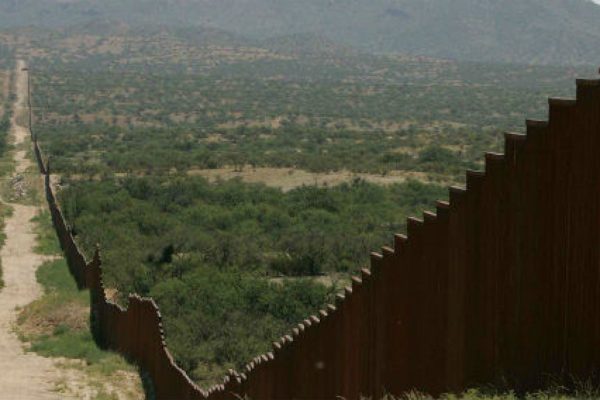The proposal to build a wall between Mexico and the United States, along with a call to deport undocumented immigrants, has turned the country’s attention once again to immigration and the complex issues surrounding our southern border. What many people don’t realize is that architecture can play a pivotal role.
To understand the southern border, one must understand the three major industries that lead border discourses, and to a large extent, the entire border landscape.
First is the globalization industry, which moves $500 billion in goods between the U.S. and Mexico every year, including $160 billion through Interstate 35 in Texas. The industry has a goal to have a border that facilitates ongoing exchange.
The second is the labor industry, which employees millions of Hispanic workers in the U.S. (legally or not) and wants a border that is not tightly closed, but also not completely open.
The third is the military industry, which sells the idea that the border is dysfunctional so that both governments can justify spending billions on equipment, personnel and infrastructure.
Together, these industries are responsible for an unreasonable amount of oversight of millions of people who need or want to cross the border for their livelihood, yet they have not been successful in controlling the flow of drugs northbound or weapons southbound.
We know from history that walls built to isolate are not sustainable in the long run. The Hadrian wall fell, the Berlin Wall fell, the Palestine Wall will eventually fall and so will the Mexican Wall, if it is ever completed.
One wall has endured however. The Great Wall of China survived not as an instrument of separation, but as a piece of infrastructure to move people and information faster. And this is precisely what we need to do: transform the southern border into a driver of economic opportunity with social and environmental sustainability in mind.
Architecture, with its power to articulate visions of a better future, has a responsibility to weigh in on such issues and be part of their solution. This was the spirit of an informal partnership with Universidad Autónoma de Nuevo León in Monterrey, Mexico.
Students from both sides of the border had the chance to interact and work together for solutions to foster integration in different border cities. Some of those cities are already integrated such as Laredo and Nuevo Laredo. Other cities such as Brownsville and Matamoros have a long way to go, despite sharing a meandering Rio Grande/Rio Bravo that could be transformed into a jaw-dropping boulevard and river walk.
Common to all border towns is a large buffer of undeveloped land on the U.S. side, while the Mexican side is denser and built up against the dividing line. The land availability in the U.S. cities is a significant untapped opportunity.
Instead of militarized wastelands, we could have proper parks, water cleaning meadows, sports facilities and shopping malls. We should create community integration and economic opportunity for those sister cities and their sister populations. That means stitching them together, not ripping them apart.
And, of course, there are challenges to fostering integration at the border. One problem crosses all border towns and needs to be addressed: our North American automobile dependency.
While cargo is handled by NAFTA ports and people endure multiple levels of scrutiny to cross the border, the randomized inspection of cars gives them something very close to a free pass. Separating the cars from their drivers to thoroughly scan the machines – just as we do with our carry-ons in airport security – would work on many levels. It would prevent drugs from moving north and weapons from moving south.
It would incentivize public transportation, which, in border cities, needs to be better integrated. It would allow hundreds of acres that today work only as buffers to be used as parks, adding environmental sustainability to areas that need it the most. And it would create a border of social and economic integration instead of wasting money on strategies of segregation that are doomed to fail.
The issues surrounding our southern border are complex. But architecture can help in a big way, if we do it the right way.
Fernando Luiz Lara is an associate professor of architecture at The University of Texas at Austin.
A version of this op-ed appeared in the Dallas Morning News, San Angelo Standard Times and the McAllen Monitor.
To view more op-eds from Texas Perspectives, click here.
Like us on Facebook.




